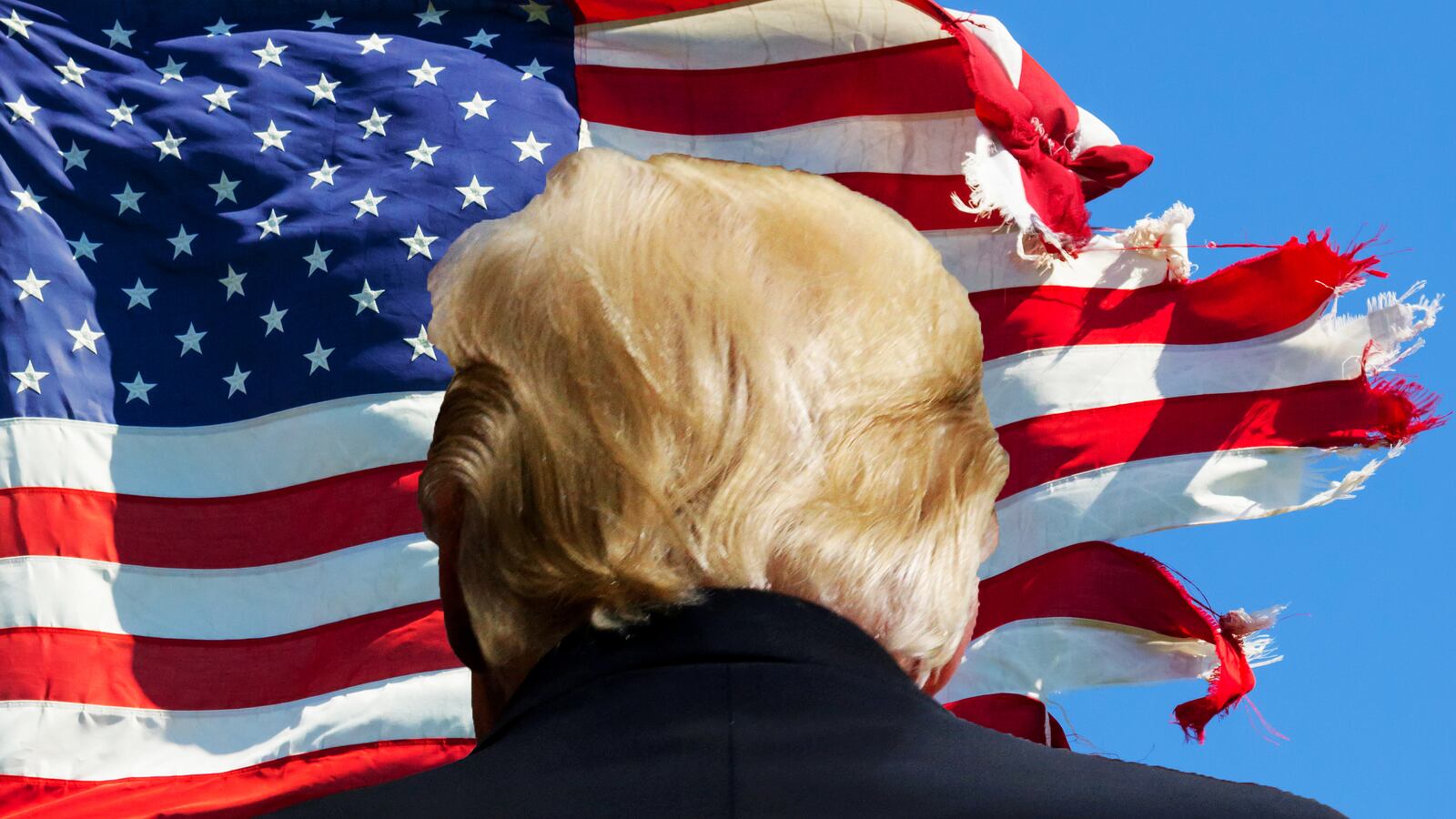Is America in a state of civil war?
“Now we are engaged in a great civil war, testing whether that nation, or any nation so conceived and so dedicated, can long endure,” said Abraham Lincoln at the dedication of the Soldiers’ National Cemetery on Nov.19, 1863—the Gettysburg Address.
Asserting the construction “great Civil War” in 1863 was a risk. The U.S. Congress did not use the term until 1907.
Calling any contest for sovereignty a “civil war” is a threat to the state.
I learn from David Armitage’s new book, Civil Wars: A History in Ideas, that the term “civil war” has been such a threat over the last 2,000 years, associated with horror and ruin, that it was useful for monarchs, poets, and philosophers to avoid the Roman idea of civil war by using less foreboding words: “rebellion” or “insurrection,” or even “revolution.”

By the latter half of the 18th century, about the time of the founding of the American Republic, scholars were able to identify three kinds of fearsome civil war.
The first was called successionist. Since pre-history, this was a probable result of a monarch’s death. Tom Paine wrote in favor of a non-hereditary state by arguing, “... [M]onarchy and succession have laid (not this or that kingdom only) but the world in blood and ashes.”
The second kind of civil war was called secessionist. The battling that followed the declarations of the Continental Congress was properly understood as a secessionist civil war: a self-selected body of political actors seeking to separate from a sovereign authority.
The United Colonies break from the English crown was understood at the time as yet another in a line of English civil wars. It wasn’t until after the deaths of almost all the signers of the Declaration of Independence that it became commonplace to call 1776-1783 the “American Revolution.”
Even then, James Fenimore Cooper wrote in 1826, “The dispute between England and the United States of America, though not strictly a family quarrel, had many of the features of a civil war.”
The third kind of civil war was called supersessionist. By measure of ruin and everlasting venom, this was the most dangerous of all, where two (or more) opposing bodies battled for control of the same territory.
The answer to the question “Are we engaged in a 2017 civil war?” is affirmative.
America is in a state of supersessionist civil war, between the body that voted for the president of the United States and the body that voted for the other candidate.
Since 1816, and Napoleon’s exile, there have been 494 wars of all types. Of those, 296 were civil wars. Of these, 109 were secessionist wars.
Just a handful have been supersessionist civil wars.
Supersessionist civil wars invite foreign intervention. It is typical of the phenomenon that today one side accuses the other of colluding with a foreign power, Russia. It is also typical that the president’s supporters treat the opposing force as secret regicides.
To look to the future, it is useful to look to the past.
The French Revolution was a supersessionist civil war. Calling it a “revolution” was politically expedient, a vanity of partisans. The French civil war pushed the state into a helter-skelter recklessness that may have lasted until the Prussian intervention of 1870. There is a case that French revenge for 1870 was a casus belli of the 1914 Great War, which itself can be thought of as a European civil war, 1914-1945.
The Russian Revolution was supersessionist civil war that not only wrecked Russia for a century, but also pulled all seven continents into a planetary Cold War.
The People’s Republic of China is the unstable result of a supersessionist civil war that continues to threaten China with fragmentation.
America’s supersessionist civil war may have started sometime after 1948 and the dawn of the Cold War, plunging the political class into a contest between those who supported strong, central government and those who supported limited, decentralized government.
After 1964, the Republican Party increasingly identified itself as Goldwaterite defenders of American liberty. The Democratic Party came to regard Republicans as unsavory plutocrats.
To return to Lincoln’s dilemma, the Confederacy represented a secessionist civil war. At the same time, there was the prospect of a genuine worst-case scenario, right up until the battle of Gettysburg, that Lee’s army could cut off Washington from Philadelphia and wreck the Federal government. But for the stand at Cemetery Ridge, what was a secessionist conflict could have become a supersessionist nightmare, with the Confederacy on the march and the Union in pieces.
What I chiefly learn from the debate is that what constitutes a civil war, 2,000 years after the Romans invented the terminology, is often a bloody-minded cycle of revenge until one side is totally eliminated and the state is beggared or vanquished or both.





